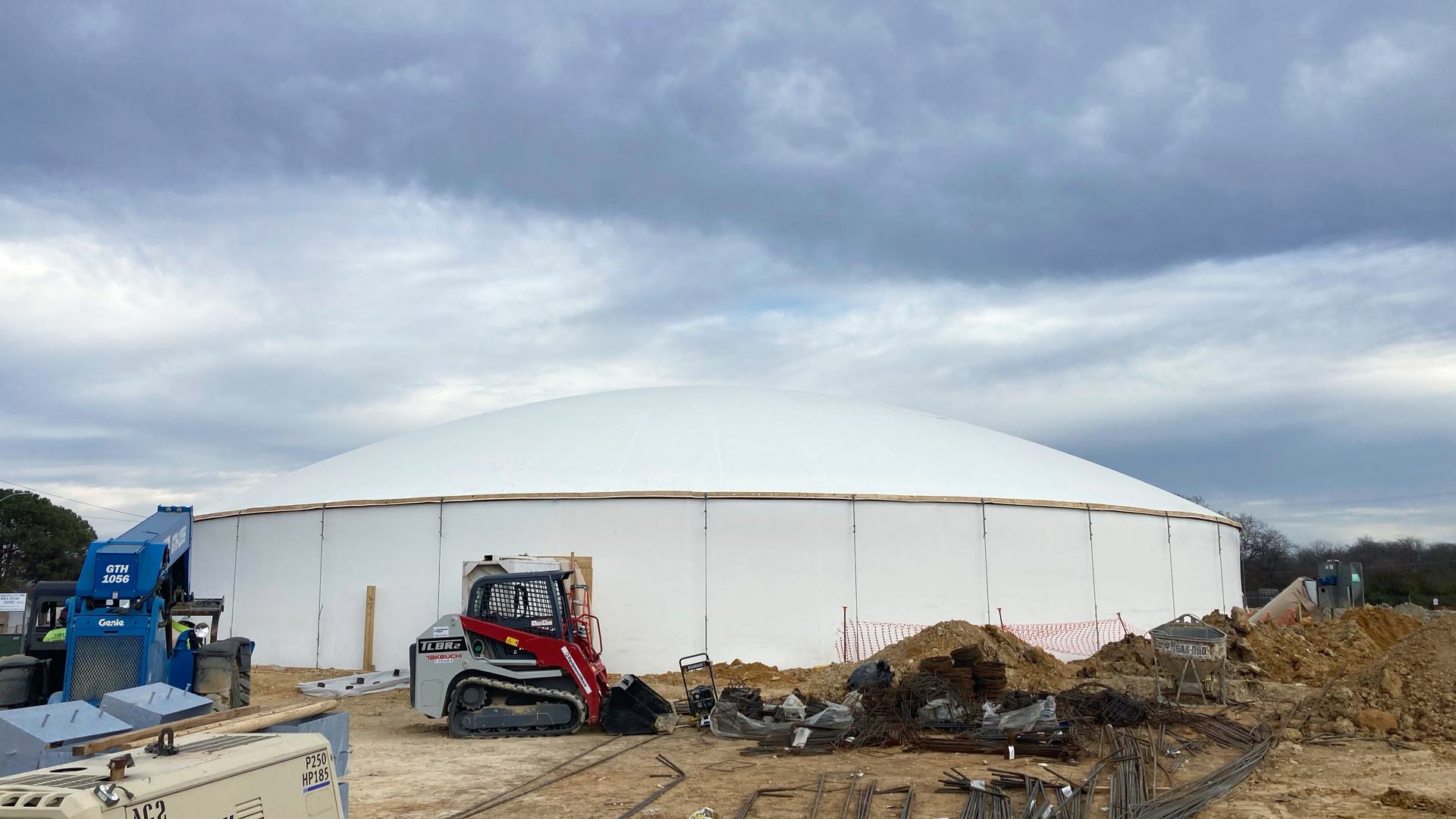Transition Ring Airform Membrane
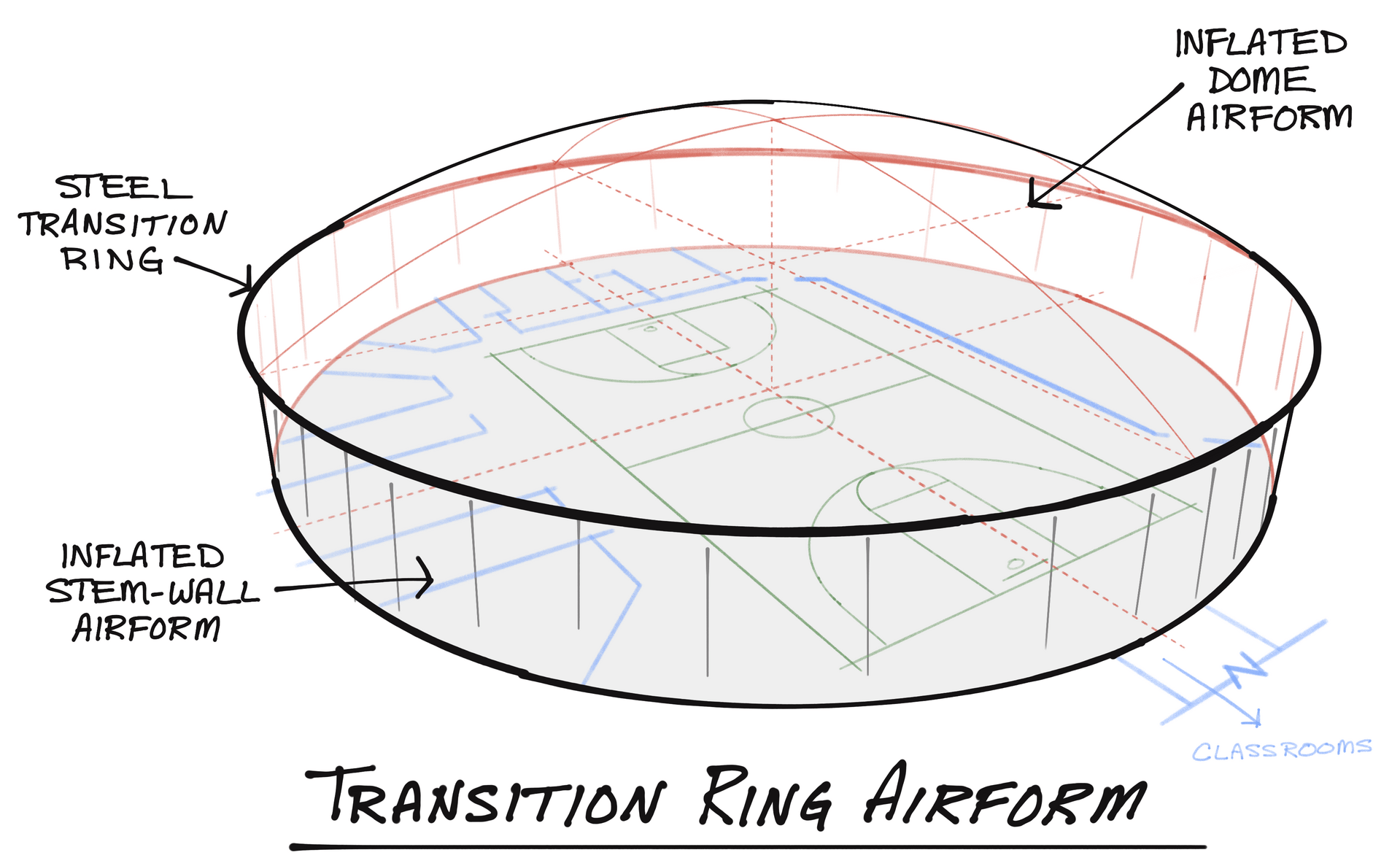
A Transition Ring Airform membrane is composed of three main parts—the steel transition ring, the stem wall membrane, and the dome membrane. The transition ring is lifted into place when the Airform is inflated.
The Transition Ring Airform membrane is a composite air structure used as the formwork for constructing a hoop-style Monolithic Dome, aka the hoop dome. It is manufactured to inflate with a cylinder-shaped stem wall and a dome roof. To achieve this result, a steel ring is incorporated at the junction between the wall and dome membranes.
Many Monolithic Domes are constructed with a separate stem wall made of concrete block. The Airform membrane is attached to the top of the stem wall, inflated, and the dome constructed. The transition ring membrane enables the construction of the wall and dome as a single process, simplifying construction. It also creates a single, monolithic structure from the foundation to the apex.
The transition ring membrane consists of three parts—the transition ring, the stem wall membrane, and the dome membrane. Assembled and inflated, it forms an air structure with a cylindrical stem wall rising vertically from the foundation to the transition ring with a dome membrane rising above it.
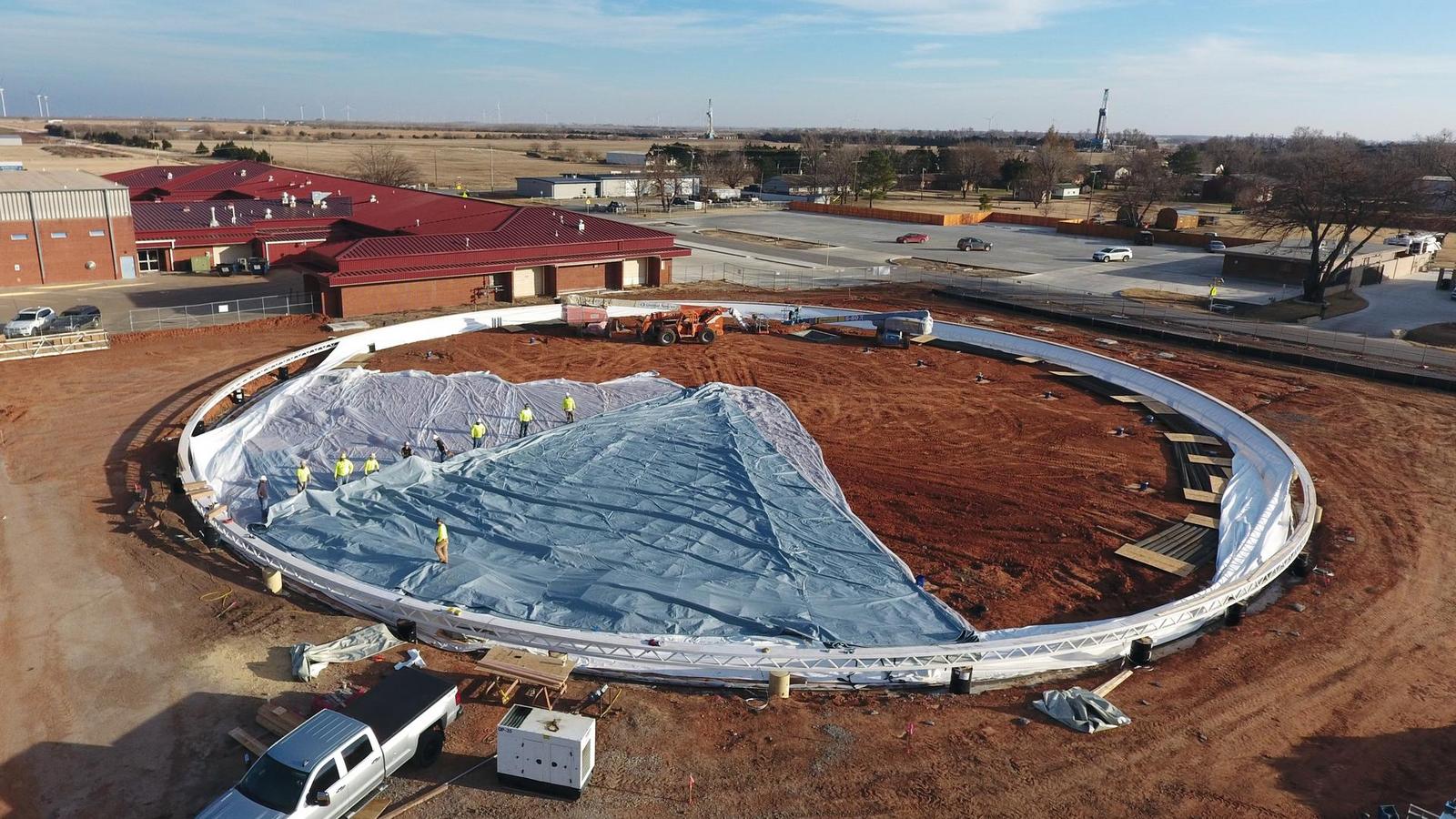
Workers spread out a 180-foot diameter tension ring membrane (gray). The steel ring is already assembled and set on barrels. The stem wall membrane (white) is mostly attached to the foundation and the tension ring.
Transition Ring
The transition ring is typically steel square tubing curved and welded into a circle matching the proposed structure’s footing. For larger structures, it may be made of multiple rings of square tubing connected with trestle braces.
Ring placement depends on the purpose of the final structure. For small buildings, the stem wall and dome membranes may be attached to the outside of the transition ring, with the ring sized to the same diameter as the concrete footing.
For larger structures, the stem wall membrane is attached to the inside edge of the ring, and the dome membrane is attached to the outer edge. This arrangement creates a small eave at the top of the stem wall.
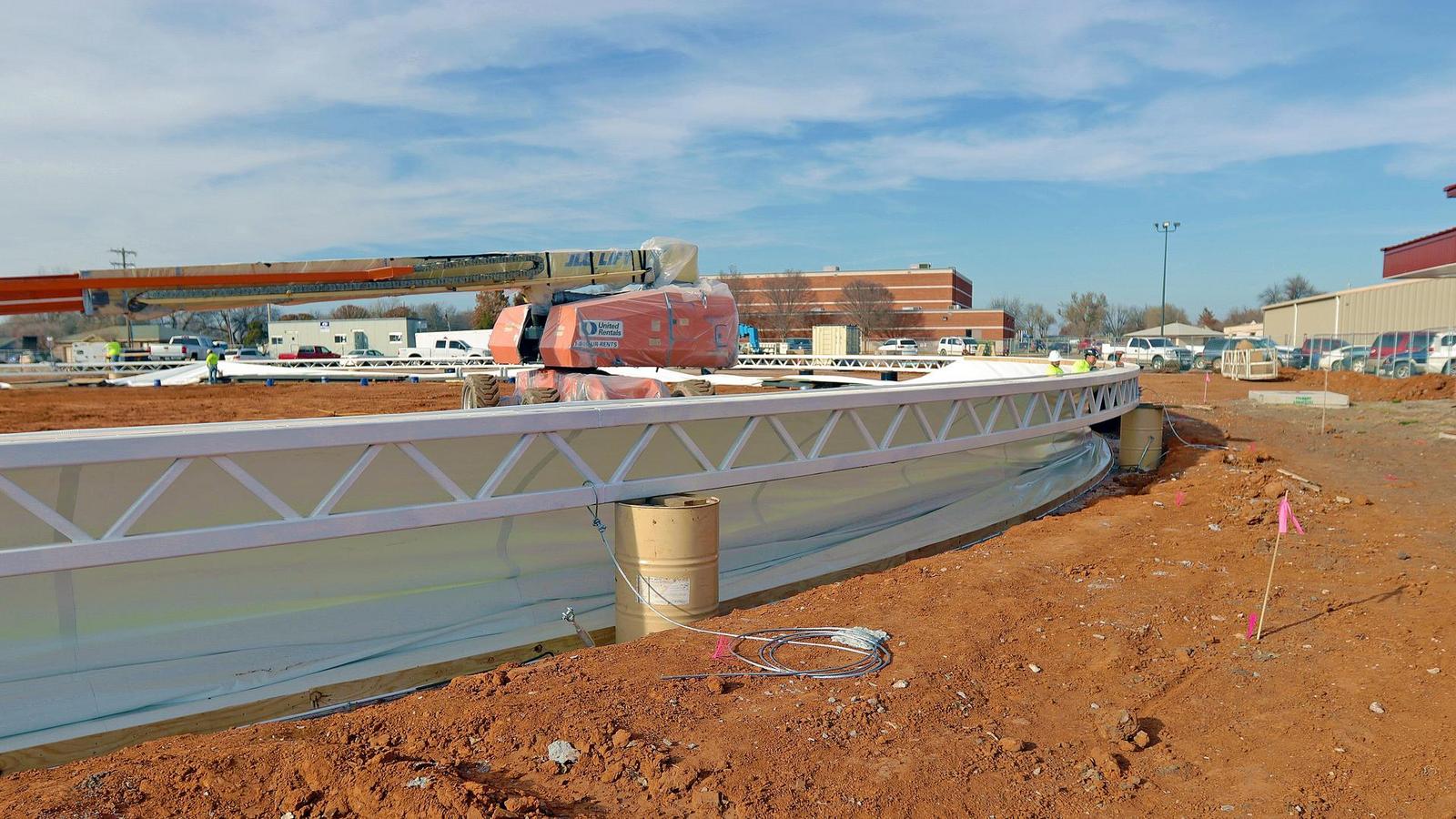
The steel tension ring is set on barrels while installing the membranes. The ring is made of three square steel tubes connected with a trestle structure to reinforce it. The white stem wall membrane is attached to the footing and the inside edge of the ring.
Stem Wall Membrane
The stem wall membrane is a fabric cylinder; it attaches to the foundation and the transition ring. The membrane is patterned to be slightly smaller than the target dimensions. When inflated, the air pressure pushes the stem wall fabric to the desired shape.
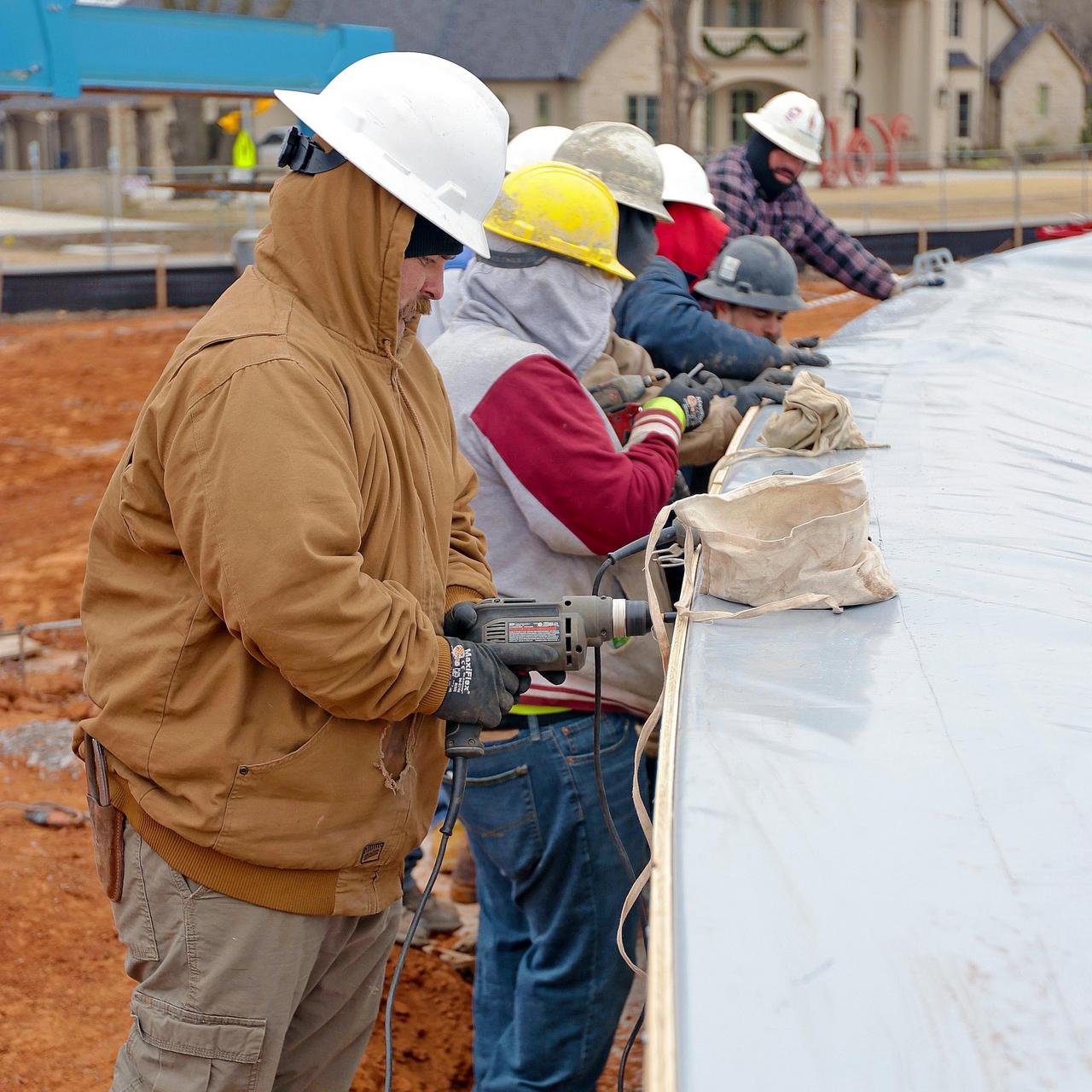
Workers attach the dome membrane to the outside edge of the tension ring. Once inflated, the dome membrane will pull with immense force on the steel structure.
Dome Membrane
A low-profile spherical dome membrane is attached to the transition ring. The dome height is generally one-fifth to one-sixth the diameter of the structure. A taller membrane may be used, but this system’s advantage is creating a low-profile dome roof with a stem wall. If we make the dome membrane taller, the design might be better off using a regular dome membrane without the transition ring.
Inflation
Design pressure for inflation and dome construction is typically between two (50 mm) to three inches (75 mm) of water column. While the membrane is patterned to inflate to the design pressure with the stem wall as vertical as possible, variations in fabric stretch require some finesse during inflation to achieve the desired result.
The Airform is inflated as one entity with the ring typically set on barrels before inflation. Once the fans start, the dome membrane lifts the ring into the air. For larger commercial structures, a telescoping forklift holds onto the ring to help stabilize it during the lifting process.
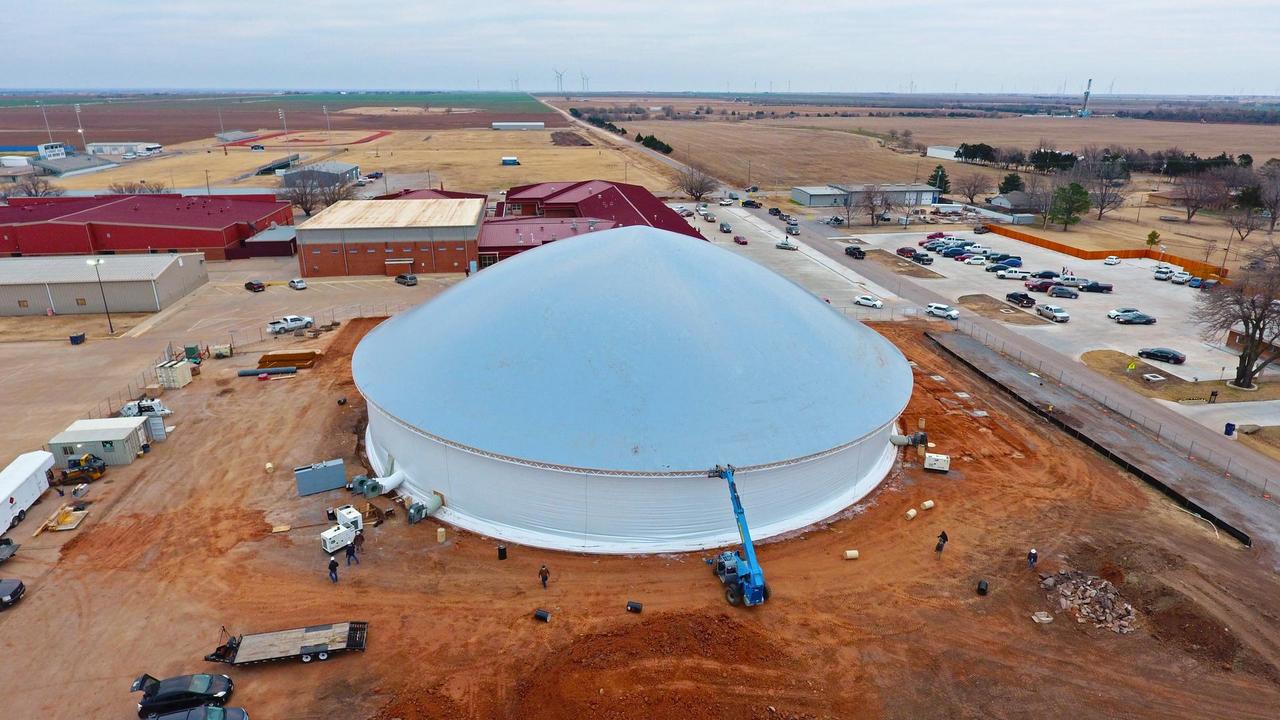
The heavy steel ring is lifted with only a fraction of the target air pressure. Once lifted into place, the pressurized structure will hold it in place during dome construction.
There is a question of how the membrane—using only air—can lift the heavy steel transition ring. The answer is that the uplift of an Airform membrane is immense—it can pull bolts from the foundation if not properly anchored. Rocketship gymnasium, for example, used a 111-foot (33.8 m) diameter tension ring membrane for construction. The steel ring was 4-inch (100 mm) square steel tubing, one-quarter inch (6 mm) thick. It weighed 4,260 pounds (1930 kg). The uplift of the Airform at 2-inches (50 mm) water column is over 96,000 pounds (44,000 kg). It’s no contest. The membrane begins to lift the steel ring at a 1/10 of an inch (2.5 mm) of water column.
When inflating the membrane, the pressure is gradually increased to lift the ring into place, then slowly—over a couple of days—pressurized until the stem wall is vertical. It’s a fabric membrane, so it won’t be exactly vertical, but it can get very, very close. Once the membrane is inflated to the target tolerances, dome construction continues.
When the dome is complete, a layer of brick veneer is applied—perfectly vertical—to the stem wall to finish the structure.

Illustrated cross-section for a 111-foot diameter hoop-style Monolithic Dome. The layers of construction from the polyurethane foam, reinforcing steel, and shotcrete create a single structure without a joint at the top of the wall. In other words, it only looks like a wall and a dome when, in fact, it’s a monolithic structure that is both strong and energy efficient.
Design Considerations
Because it is an inflated structure, there needs to be one axis of rotation. In this case, the footing and ring must be a circle. The stem wall is a cylinder with a circular base. Secondly, because the dome membrane pulls on the transition ring with substantial lateral force, it can cause some bending of the transition ring. The amount is usually slight, but it is there. You cannot rely on the transition ring to be perfectly vertical after dome construction.
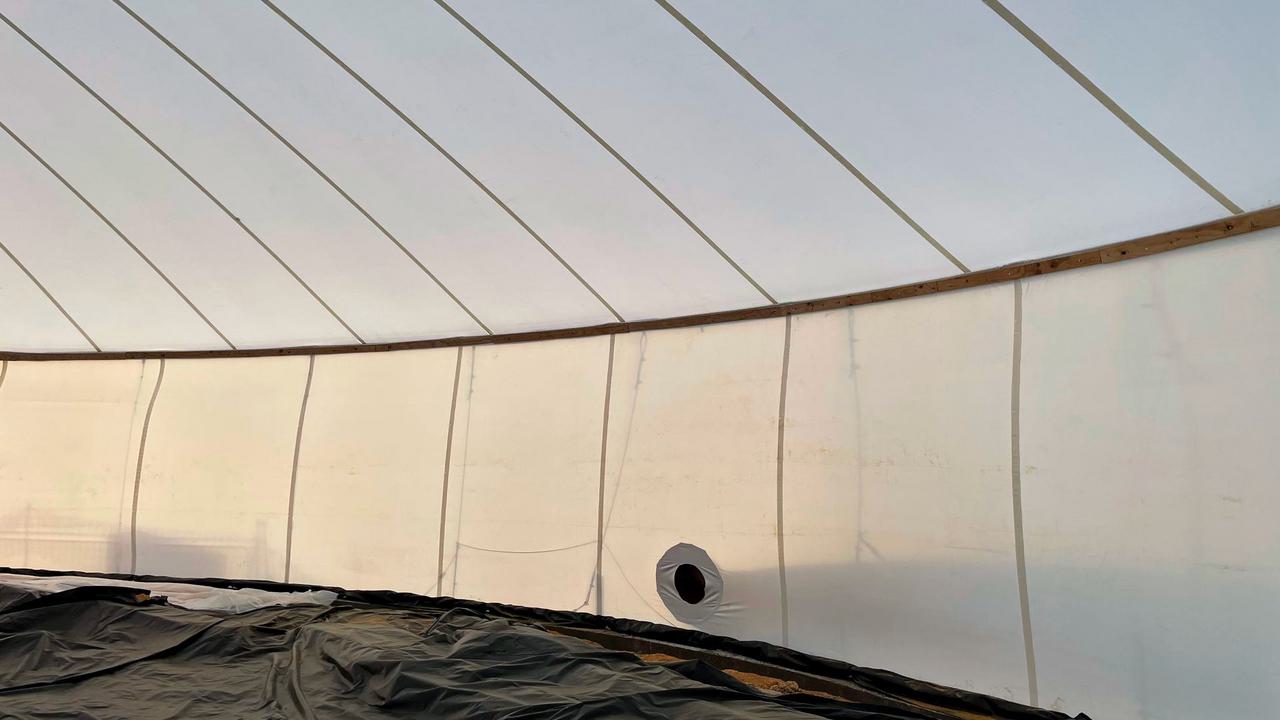
Inside the newly inflated membrane you can see the dark line of the tension ring where it delineates the stem-wall and dome.
Advantages
The transition ring membrane enables the construction of the stem wall and dome as a single structure. It’s an efficient method for creating a large dome structure with vertical walls. A single contractor can build both the wall and dome. The shape is often more acceptable to architects and customers. It can also make it easier to install windows and doors by attaching frames directly to the outer wall.
This process is an excellent alternative to augmented Airform membranes for small, house-sized domes.
